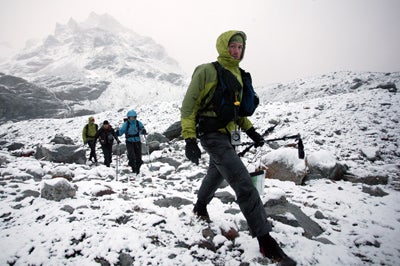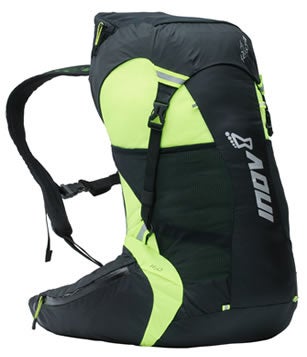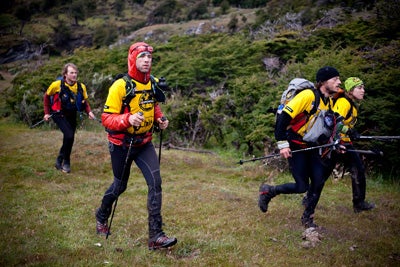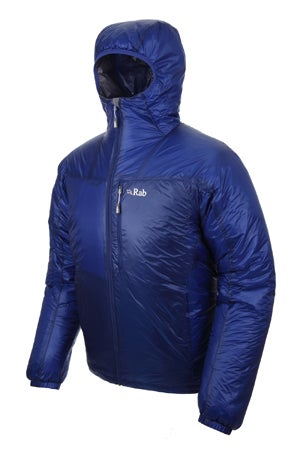
By
It took months of training and nearly a full week of human-powered effort (six days, three hours, and 31 minutes, to be exact) to traverse the entirety of Tierra del Fuego in Chile's Patagonia region. But from a ferry depot on the Strait of Magellan to a port on Isla Navarino, a sub-Antarctic island close to Cape Horn,聽 mountain bikes, trekking gear, kayaks, ropes, and a zipline over a river afforded passage on the crazy journey that was the 2010 .
Like all the racers that finished, the members of Team GearJunkie.com–which included myself and three companions, all racing together the entire time–traveled a total of 344 miles. We carried sleeping bags, tents, survival gear, and food. Resupply drops every couple of days kept our loads hovering below 25 pounds for most of the race.
Gear ranging from shell jackets to ultra-light tents was a crucial element for every team. There was a mandatory gear list provided by the race directors, including headlamps, first aid, gloves, a whistle, and a couple dozen other crucial items. Each team came with its own customized kit, a meticulous collection of equipment to support, protect, warm, feed, and speed movement on a race course dubbed “the toughest and wildest on Earth.”
I tested most of my gear for months before heading south to Chile.But on the course, where it rained and snowed–and where wind whipped up to 80miles per hour one day–some of the gear reached its breaking point. Aftertromping in swamps, with wet legs and feet on and off for three days straight,the Velcro on the top of my Mountain Hardware Trail Gaiters would not holdshut. It peeled back an inch or two and exposed my shin.
In total, we trekked more than 140 miles over the week. My poles, the Carbonlite AERGON Antishock Trekking Poles from Leki, loosened after miles on the move. Twice, a basket on one of the telescoping poles snagged in deep mud and pulled a section out too far. It bent and nearly broke. But it was fixable with some careful field repair and a retightening to hold the section back in place.

Backpacks were crucial. With 30 liters of capacity, I was initially concerned that my Inov-8 Race Pro 30 backpack would be too small. But the body-hugging pack proved perfect for the race. I added dual external bottle holders on the shoulder straps and an extra pouch pocket on the hip belt. This kept my race food and small essentials like lip balm and electrolyte pills accessible the entire time. Overall, the pack managed my gear and sat comfortably the whole week as my team trekked and ran on the course.
At night, when we slept, I emptied the Inov-8 backpack and used it as an ad hoc camp pad. There is a foam insert in the back panel, which provided some insulation from the ground. My sleeping bag, Mountain Hardware's Ultralamina 32, was a stellar performer. It kept me warm the whole trip, even when temps plunged one night below freezing on a mountain pass. For storage in a backpack, the 31-ounce bag stuffed down to the size of a small cantaloupe.
We pitched tents a couple times on the course, employing a pair of ultra-light shelters from Terra Nova Equipment. The company's Laser and Laser Competition tents are amazingly small and light, hovering less than three pounds a piece. The minimalist design includes one hoop pole, siliconized nylon fabric, and needle-like tent stakes made of titanium.
In the mountains of Tierra del Fuego, the tents shielded us from rain and snow, but they were difficult and time consuming to set up after an exhausting day of racing, requiring multiple guy points to stake out each end. Wind rattled the tent one night, whipping through ventilation ports and causing me to slink inside my sleeping bag and hide.

Apparel and outerwear may be the most key equipment on an expedition. A few standout items include my wool base layers and an insulated jacket from Rab.
For a week straight, I did not change shirts. Next to my skin, I wore a tight-fitting, ultra-thin wool T-shirt from Ibex Outdoor Clothing. On top of that was a long-sleeve base from I/O Bio Merino, which had a high neck and a zipper on the chest. These “second skins” never left my body during the race. The fine wool adapted across wide temperature swings. It retained warmth when wet, and it breathed when my body was hot.
The Xenon jacket from Rab, available next fall, was a life saver. The Xenon is touted as light, warm, and durable, and it held up on all counts in the race. It is an insulating piece, not a shell. (I wore the Arc'teryx Alpha SL Pullover for waterproof protection, a Gore-Tex shell jacket that proved bomber in rain and snow.)

For warmth, the Rab jacket employs 60 grams of Primaloft Oneinsulation, adding enough loft to trap body heat and keep you warm intemps down near freezing. The jacket weighs only about 11 ounces, andit packs into its own chest pocket for storage. A thin face fabric on the Rab Xenon jacket called Pertex Quantum GL feels fragile to the touch, but in Patagonia, where we bushwhacked for miles through thick woods, the Xenon never ripped. Its admirable performance kept me warm, and it was a small but crucial part of the equipment kit that allowed me to make it through the course, across Tierra del Fuego, and back to civilization again.
–Stephen Regenold writes about outdoors gear at , where you can find additional reports and photos from the 2010 Wenger Patagonian Expedition Race.